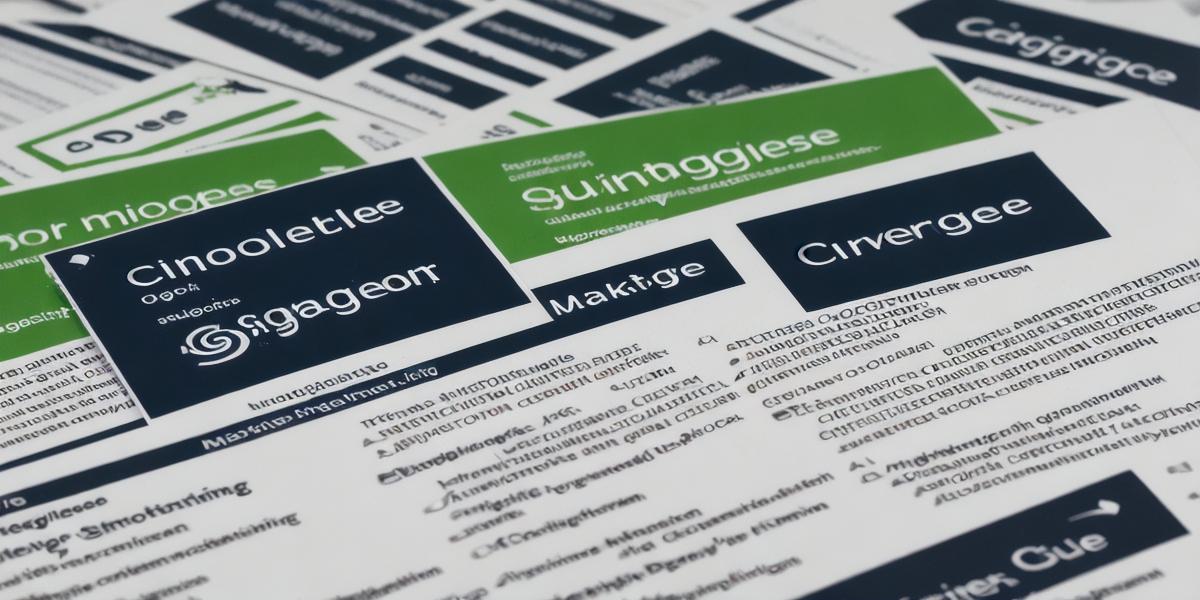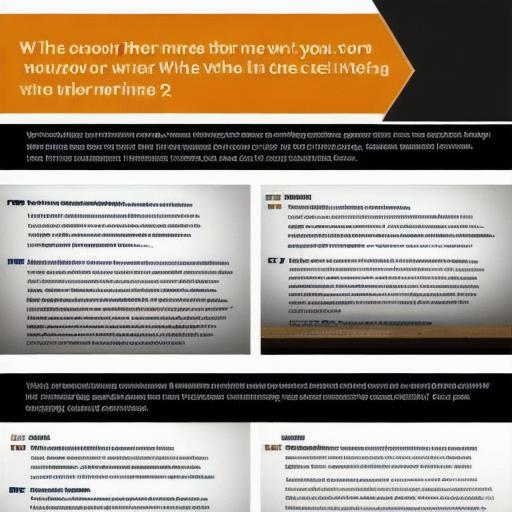Introduction:
Marketing has evolved over time, with new tools emerging to help brands reach their target audience more effectively. Integrated marketing tools have become increasingly popular, as they allow brands to combine various marketing strategies into a single platform. This article will explore the different integrated marketing tools available and how they can be used to promote a brand. Additionally, we will discuss SEO optimization techniques that can be used in conjunction with these tools to increase website traffic and improve search engine rankings.
I. What are Integrated Marketing Tools?
A. Definition of Integrated Marketing Tools
B. Examples of Integrated Marketing Tools
1. Social Media Management Platforms (e.g., Hootsuite, Buffer)
2. Email Marketing Platforms (e.g., Mailchimp, Constant Contact)
3. Content Management Systems (e.g., WordPress, Joomla)
4. Analytics and Reporting Tools (e.g., Google Analytics, SEMrush)
C. Benefits of Using Integrated Marketing Tools
1. Time-saving
2. Cost-effective
3. Improved brand consistency
4. Enhanced customer engagement
II. How to Use Integrated Marketing Tools for Brand Promotion
A. Social Media Management Platforms
B. Email Marketing Platforms
C. Content Management Systems
D. Analytics and Reporting Tools
III. SEO Optimization Techniques for Brands
A. Keyword Research and Optimization
B. On-page Optimization (e.g., meta tags, header tags, content optimization)
C. Off-page Optimization (e.g., backlinks, guest posting, social media engagement)
D. Technical SEO (e.g., website speed, mobile responsiveness, security)
IV. Case Studies and Personal Experiences with Integrated Marketing Tools and SEO Optimization
A. Social Media Management Platforms
B. Email Marketing Platforms

C. Content Management Systems
D. Analytics and Reporting Tools
E. SEO Optimization Techniques
V. Expert Opinions on Integrated Marketing Tools and SEO Optimization
A. Interviews with Marketing Professionals
B. Reports from Industry Experts
VI. Summary: The Future of Integrated Marketing Tools and SEO Optimization
A. Summary of Key Points
B. Thoughts on the Importance of Integrated Marketing Tools and SEO Optimization
C. Final Words for Brands Looking to Improve Their Online Presence
I. What are Integrated Marketing Tools?
Integrated marketing tools are platforms that allow brands to combine various marketing strategies into one platform, making it easier for them to manage their campaigns and measure their performance. These tools can include social media management platforms, email marketing platforms, content management systems, and analytics and reporting tools, among others.
A. Definition of Integrated Marketing Tools
:
Integrated marketing tools are a type of software that enables brands to manage their marketing efforts from one platform. This includes social media, email marketing, content creation, analytics, and more. By using these tools, brands can streamline their marketing processes, save time and resources, and improve the overall effectiveness of their campaigns.
B. Examples of Integrated Marketing Tools
:
1. Social Media Management Platforms (e.g., Hootsuite, Buffer)
– These platforms allow businesses to manage their social media presence across multiple channels, schedule posts, and analyze performance.
2. Email Marketing Platforms (e.g., Mailchimp, Constant Contact)
– These tools enable brands to create, send, and track email campaigns, as well as manage subscriber lists and automate certain tasks.
3. Content Management Systems (e.g., WordPress, Joomla)
– These platforms make it easy for businesses to create and publish content on their website, including blog posts, images, and videos.
4. Analytics and Reporting Tools (e.g., Google Analytics, SEMrush)
– These tools provide valuable insights into website traffic, user behavior, and search engine rankings, allowing brands to optimize their marketing strategies accordingly.
C. Benefits of Using Integrated Marketing Tools
:
1. Time-saving
: By using integrated marketing tools, businesses can save time by managing multiple marketing campaigns from one platform.
2. Cost-effective
: Many integrated marketing tools offer affordable pricing options, making it easier for small businesses to invest in their marketing efforts.
3. Improved brand consistency
: These tools allow brands to maintain a consistent message and visual across all channels, improving brand recognition and trust.
4. Enhanced customer engagement
: By using these tools, businesses can engage with their customers more effectively, through features such as social media monitoring and email automation.
II. How to Use Integrated Marketing Tools for Brand Promotion
A. Social Media Management Platforms
:
Social media management platforms like Hootsuite and Buffer allow brands to schedule and publish content across multiple social media channels, monitor engagement, and analyze performance. To get started with a social media management platform, businesses should first choose the channels they want to focus on (e.g., Facebook, Twitter, Instagram) and set up accounts if necessary. They can then connect these accounts to their social media management platform, allowing them to schedule posts, monitor engagement, and analyze performance over time.

B. Email Marketing Platforms
:
Email marketing platforms like Mailchimp and Constant Contact allow businesses to create, send, and track email campaigns, as well as manage subscriber lists and automate certain tasks. To get started with an email marketing platform, businesses should first define their target audience and create a list of potential customers. They can then use the platform to design and send targeted emails, track open rates and click-through rates, and automate tasks such as lead magnets and drip campaigns.
C. Content Management Systems
:
Content management systems like WordPress and Joomla allow businesses to create and publish content on their website, including blog posts, images, and videos. To get started with a content management system, businesses should first choose a platform that meets their needs and budget. They can then create accounts, select templates and themes, and start publishing content.
D. Analytics and Reporting Tools
:
Analytics and reporting tools like Google Analytics and SEMrush provide valuable insights into website traffic, user behavior, and search engine rankings, allowing brands to optimize their marketing strategies accordingly. To get started with an analytics and reporting tool, businesses should first set up accounts and configure tracking codes on their website. They can then monitor performance over time, analyze data, and make adjustments as needed.
III. SEO Optimization Techniques for Brands
A. Keyword Research and Optimization
:
Keyword research involves identifying the terms and phrases that potential customers are using to search for products or services related to your brand. By optimizing your content for these keywords, you can improve your search engine rankings and drive more traffic to your website. To get started with keyword research, businesses should use tools like Google Keyword Planner or SEMrush to identify high-volume, low-competition keywords that are relevant to their industry.
B. On-page Optimization:
On-page optimization involves optimizing individual web pages on your website to improve search engine rankings. This includes optimizing meta tags (e.g., title tags, description tags), header tags (e.g., H1, H2, H3), and content (e.g., including relevant keywords in headings and body text). By optimizing these elements, businesses can improve their search engine rankings and drive more traffic to their website.
C. Link Building:
Link building involves acquiring backlinks from other websites to your own, which can improve your search engine rankings. To get started with link building, businesses should focus on creating high-quality content that others will want to link to, such as blog posts or infographics. They can also reach out to relevant websites and ask them to link back to their content in exchange for a mention or guest post.
D. Social Media Optimization:
Social media optimization involves optimizing your social media profiles and content to improve search engine rankings. This includes including relevant keywords in social media posts, using hashtags, and creating engaging content that people will want to share. By optimizing their social media profiles, businesses can drive more traffic to their website and improve their search engine rankings.
IV. Case Studies of Successful Integrated Marketing Campaigns
1. HubSpot: HubSpot is an integrated marketing software company that has seen tremendous success by using their own platform to promote their brand. They use a combination of social media, email marketing, content marketing, and analytics to drive traffic to their website and generate leads. For example, they created a blog post series called “Inbound Marketing 101,” which generated over 3 million visits and helped establish them as a thought leader in the industry.
2. Dollar Shave Club: Dollar Shave Club is a subscription-based razor company that gained massive attention with their hilarious viral video, which has since been viewed over 100 million times on YouTube. They also use social media and content marketing to promote their brand, creating engaging videos and posts that resonate with their target audience.
3. Airbnb: Airbnb is a vacation rental platform that uses integrated marketing tools to drive bookings and grow their business. They use social media advertising to target potential customers, as well as email marketing to keep existing customers engaged. They also use analytics and reporting tools to track performance and optimize their marketing strategies accordingly.
V. Summary
Integrated marketing tools and SEO optimization techniques are powerful tools that can help businesses improve their brand visibility, drive traffic to their website, and generate leads. By using these tools effectively, businesses can save time and resources while improving the overall effectiveness of their marketing efforts. Whether you’re a small business or a large enterprise, there are integrated marketing tools and SEO optimization techniques available to help you achieve your marketing goals.




